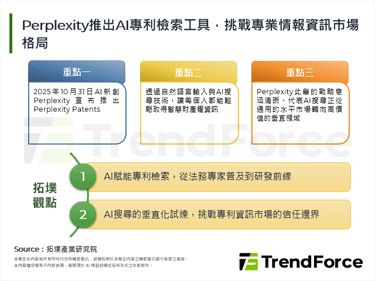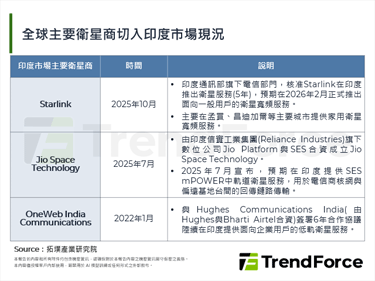China’s domestic demand will spearhead industrial growth in 2H09
Subscribers to commercialized 3G service leap across the 10Mn mark
As telecom industry restructuring and 3G license release work progress, top three telecom operators in China have begun network deployment and terminal equipment tenders. This past May, China Mobile’s TD-SCDMA, China Telecom’s CDMA2000, and China Unicom’s WCDMA have all embarked on commercial operations on trail basis. In the second half of 2009,China will officially unveil the 3G service to the crowds. Topology Research Institute estimates that behind government policy support and telecoms’ promotion effort at full-throttle, subscribers to 3G service in China should number over 10Mn people in 2009 (more specifically 13.4Mn), while 3G handset sales will reach 13Mn units. Among Taiwanese handset/equipment makers, including Inventec Appliances, BenQ, and Dopod have joined the TD alliance. Others are involved in the CDMA and WCDMA supply chain. HTC, for example, has obtained handset procurement orders from China Telecom, which could lead to more 3G business in China for HTC.

With regard to handset chips, MediaTek, who controls over 70% of the Chinese market, has co-developed the TD chip solution with Datang Telecom to assume leadership in China. VIA, too, has stepped up cooperation with China Telecom, in a bid to increase competitiveness and opportunity to succeed in CDMA2000 handset and Netbook application markets. Meanwhile, cooperation between Taiwanese Netbook brand names and Chinese telecoms has grown increasingly intimate. From China Unicom which teams with Acer, China Mobile which partners with Acer and MSI, to China Telecom which associates with Asustek, Acer, and BenQ, are all cases in point. Taiwanese terminal equipment plants jumping on bandwagon with Chinese telecom operators, having their products bundled with 3G service contracts, makes for a win-win situation for terminal equipment brand names and for 3G telecom service carriers, as both can end up with greater market presence.
Waves of bullish news helps Chinese LCD TV market to grow steadiliy
In 2H09, China’s LCD TV market is in for one piece of good news after another. Other than holiday buying and subsidies rural consumption of color TV that has spread from a few to more provinces across China, the latest old-for-new subsidies targeting urban areas are ready to contribute too. At present, rural market subsidies have seen product price caps lifted to RMB3500. Meanwhile, entering 2H09, the mainstream TV size is set to shift from 26-inch to 32-inch while LCD TV prices continue its slip. These developments will all prove conducive to increase LCD TV sales and speed-up of replacement of CRT TV. Topology Research Institute therefore estimates that in 2009, China’s LCD TV should post sales of 21Mn units, up 53.8% YOY. With that, the marketing/distribution network in rural China should form up, and in the new landscape, domestic and foreign enterprises must strive to re-establish their presence.
For Taiwanese companies, at a time when upstream suppliers and end-product vendors complement each other unlike before, cooperation across the Taiwan Straits becomes ever more crucial. And as a result of the subsidies to rural consumption of household appliances, system makers and brand name vendors now depend much less on large chain stores for distribution. AOC, for example, emerged winner in two rounds of color TV tenders (to become a supplier to household appliance consumption subsidy plan), while BenQ has had five LCD TV models emerging as winners of these tenders, too. These victories give AOC and BenQ a head start in China’s rural consumption market. For TV panels, China’s brand name TV vendors have turned to Taiwan as the main supplier, who now controls over 50% of the Chinese market, with Korea trailing far behind and AUO, CMO benefiting a great deal. Among component suppliers that also get a piece of the pie are LCD driver IC vendors Himax, Novatek, and controller IC makers MediaTek and MStar Semiconductor.
Driven by Netbook and commercial NB demand, Chinese NB market resumes strength gradually
With economy regaining strength, China expanding coverage of rural consumption subsidies, and the latest launch of old-for-new subsidies, one can expect Chinese enterprises to restart IT product procurement in the second half of 2009. And as Chinese government sets out to maintain GDP growth at 8% YOY, it’s only sensible that the public sector will be given the responsibility of prodding domestic demand. That is, governments at different levels and state-owned enterprise are expected to place orders for NB models that are slim, light-weight, functional for long hours, and cost RMB4000-6000. These orders should be an important source of consumption growth entering 2H09. And in the opinion of Topology Research Insitute, Chinese market of NB could see shipments above the 10Mn-unit mark to grow 25% YOY to 11.3Mn units in 2009.
Other than commercial NB, Netbook has been fast penetrating the market behind the joint efforts of brand name vendors, channel distributors, and telecom operators, as shipments of both customization and non-customization products are impressive. Unbranded knock-off Netbook has its shipments divided between domestic sales and export sales at the ratio of 1 to 2, and with domestic distribution network becomes up and running in the next three years, more unbranded Netbooks should be sold domestically than they are exported. Taiwanese enterprises have some roles to play in this area, as Acer and Asus have had 21 and 27 products winning tenders related to subsidies to rural consumption of PCs. These two, plus MSI and BenQ have achieved a certain level of market penetration regarding 3G customization Netbook. The huge market of over 10Mn units a year has given rise to business that could benefit Taiwanese OEM/ODM NB makers and component suppliers.
China’s LED demand is set to grow by leaps and bounds
LED has always been tagged by Chinese government as an industry to promote. The “Ten-City, Ten-Thousand Lamp” plan, scheduled for 2009-2015, has received applications by a total of 21 cities including Shanghai, Shenzhen, Dalian, and Ningbo. From this point on, annual demand for LED should be around 4bn chips. Topology Research Institute estimates that in 2009, China’s LED market should grow 61.96% to be worth RMB74.5bn. By end-2009, China will have produced over 1.4Mn LED street lamps, which should grow to 2.5Mn units in 2010. By 2015, general-purpose lighting market should have 30% penetrated by LED products. This portion of the market could be worth up to RMB500bn.
The two parties across the Taiwan Straits have recently released six points of consensus on LED industrial development, hoping to establish a standing industrial cooperative and technological exchange mechanism and to co-build the LED lighting sectoral chain and industrial alliance to jointly participate in the trials of Ten-City, Ten-Thousand-Lamp campaign. Among other goals the two parties hope to accomplish through cooperation are collaboration in technological development, set-up of a LED lighting patent databank and an intellectual property (IP) reciprocating mechanism, as well as the establishment of standardized working procedures and a platform which one can test and certify industrial standards on. For Taiwanese LED players, these six points of consensus mark a big step toward the right direction, and LED companies will be wise to jump on board.
Chinese car market bucks the trend to rebound, prompting brisk sales of automotive electronics and car components
At a time when US car makers are on the brink of bankruptcy, car shipments in China have continued to record impressive numbers. With the launch of stimulus and subsidy programs targeting car market, plus a special focus on the rural market since March, China’s car shipments came in at 2.6Mn units in 1Q09, when it first surpassed US at 2.2Mn units to become the world’s largest car market, where the demand for car components and automotive electronics will increase to benefit not only the original equipment manufactures(OEM) but also the aftermarket (AM) and maintenance service suppliers.
Taiwanese car component and automotive electronics enterprises have long cultivated the Chinese market, where they have set up production bases across the nation. Other than the tradtional plastic parts, metal parts and tires, automotive safety systems made by Tung Thih Electronic and Mobiletron, Telematics information and entertainment systems made by E-lead and Hamg Shing Technology, and car body systems presented by USI and Delta Electronics have all established their presence in China’s car market, where these companies will continue to be excited about and make every preparation for the upcoming demand for automative electronics as soon as car consumption takes off in rural China.
Researcher Jeter Chang with Topology Research Institute notes that as China’s domestic market becomes ever more important, Taiwanese enterprises simply can’t afford to be absent. Taiwanese IT industry will see business opportunities focusing on panel, IC, Netbook and LED. Taiwanese panel makers, in particular, could best ride the waves of improved bilateral relations between Taiwan and China and of LCD TV replacement demand in China where they stand a good chance of becoming Chinese vendors’ suppliers of choice. Throughout a series of China’s policies to prop up domestic demand, Taiwanese companies should grab the historic opportunity and try to find a time and place to break in. At a time when there are cross-straits dialogues and a cooperation platform to bridge the gap, Taiwanese players should make the most of the division of labor to complement each other. This way, Taiwanese companies can not only flex their muscles in the areas of OEM/ODM and component supply, but can experiment with their branding effort in the domesticmarket of China.






